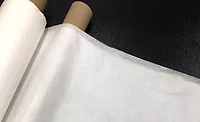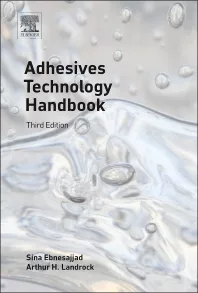Dry Nitrile-Phenolic Adhesives
Nitrile-phenolic film adhesives are a compelling alternative to liquid adhesives for demanding applications.
Demanding manufacturing applications require high-quality materials—from the most prominent base materials to the most imperceptible of components—that will not slow down the production process. Nitrile-phenolic adhesives are used to bond friction materials to metallic substrates in drive components for cars, trucks, off-road vehicles and motorcycles. They can also be found in everyday manufacturing for crane brakes, pressure vessels and machinery clutches/brakes.
The choice of adhesives can make a big difference in how quickly and inexpensively a product can be produced. Thus, it is important to be aware of all of the options available—especially in industries known for strict regulations, fierce competition, demanding consumers and quickly evolving technology.
While liquid adhesives and other traditional fastening devices have been used in manufacturing for years, alternative adhesive materials such as pressure-sensitive adhesives (PSAs) have enabled some manufacturers to create safer, higher quality end products than would have been possible through other adhesion methods. Nitrile-phenolic films, specifically, are structural adhesives that have been shown to deliver quality and performance without requiring substantial manufacturing resources.
What is Nitrile-Phenolic Tape?
Nitrile-phenolic adhesives are dry, heat-activated film adhesives that provide a strong, permanent bond—in excess of 4,500 psi—between various substrates via the moderate application of heat and pressure. When exposed to temperatures greater than 300°F, the film crosslinks and transitions from a thermoplastic to a thermoset material. This creates very high bond strength due to excellent plastic flow and results in 100% contact between the bonded substrates. Once solidified after the bonding process, nitrile-phenolic adhesives will not re-liquefy if exposed to extreme temperatures; the bond is permanent.
Generally taking the form of dry adhesive tapes, nitrile-phenolic films are delivered on a release liner for easy assembly and transfer to the mating surfaces (see Figure 1). These customizable tapes can be constructed in different formulations to suit the materials to which they will be bonded and to address the unique needs of demanding applications. Nitrile-phenolic films are also extremely resistant to heat and chemicals, making them ideal for use in friction-related applications such as brake systems or motors. Because of their versatility, dry adhesive tapes are progressively being chosen for use in automotive OEM, heavy equipment, lawn and garden, and industrial applications.
Staying Dry
The latest generation of dry film adhesives offers a viable alternative to other common fastening technologies, such as liquid solvent-based adhesives, for a number of reasons.
Simpler Handling
Nitrile-phenolic tapes are easier to work with than liquid adhesives. Engineers working with liquid adhesives often struggle to maintain a clean assembly area due to the inherent messiness of liquid adhesives—a problem that not only causes annoyance, but can result in assembly line downtime or other inefficiencies due to cleanup requirements. Since dry nitrile-phenolic adhesives are coated to a release liner for simple, mess-free assembly, additional expenses related to labor, maintenance and management can be avoided.
Lower Maintenance
Even off the manufacturing floor, liquid adhesives are more difficult to handle than dry adhesive films. Solvent-based liquid adhesives must be shipped under highly controlled conditions and are expensive to dispose of due to their hazardous nature, thus creating an additional logistical and monetary burden for manufacturers. Dry film adhesives require no specialized shipping conditions and outlast liquid adhesives once they have been exposed to air, with a shelf life of up to 24 months (as opposed to a 30-day lifespan for liquid adhesives).
Quick Bonding
In order to properly cure, liquid adhesives require a lengthy bonding period during which an adhesive-coated surface must undergo applied heat and pressure in an oven for up to 24 hours. In comparison, a nitrile-phenolic thermoset adhesive requires only minutes to bond permanently, offering time savings and speed-to-market.
Enhanced Precision
Nitrile-phenolic tapes are coated to very precise thicknesses, ensuring tight tolerances and consistent bond strength. Liquid adhesives, alternatively, cannot be applied to a precise thickness, especially when applied manually. The application of too little liquid adhesive can lead to debonding, and too much liquid can cause premature failure or overflow into other critical product components. For this reason, many prefer the added precision offered by dry film adhesives.
Less Waste
Because nitrile-phenolic tapes are available pre-measured for in-line application to raw materials and converted parts, they also allow for the avoidance of unnecessary material usage. Liquid adhesives, however, do not provide a precise thickness control and thus excess material is often wasted.
Safer Usage
Permissible emission levels and operating procedures around volatile organic compounds (VOCs) or gases containing a variety of chemicals that cause negative short- and long-term health effects, are often strictly governed by state and federal environmental and safety regulations. Whereas nitrile-phenolic films typically contribute very minimally to the production of VOCs, solvent-based liquid adhesives can emit much higher levels of these dangerous substances and may be banned in some areas. If mandated maximum VOC emission levels are surpassed, the manufacturer may be required to install special ventilation to guarantee occupational safety for workers or purchase oxidizing equipment, leading to substantial costs.
Small Changes for Large Rewards
When deciding what adhesive technology to use, it’s important to consider every way in which an adhesive’s adoption will affect your operations. Adhesives may only be a minor component in a much larger product, but the costs associated with their usage can add up quickly. Depending on your current setup, easy-to-use adhesive options like nitrile-phenolic tapes could be the key to considerable savings while offering exceptional performance in the toughest applications.
With any complicated product like adhesives, an understanding of the details specific to every application is necessary to make an informed decision regarding which technology to use. Consider the substrates and materials being bonded, the environmental conditions to which an adhesive will be exposed, and specific performance needs before making any final decisions. Adhesive manufacturers and suppliers can often answer any questions you have, so seek out their advice. Once you have done the research, you may find that substantial cost savings can be attained by a simple switch in materials.
For more information, visit www.mactac.com.
Looking for a reprint of this article?
From high-res PDFs to custom plaques, order your copy today!




